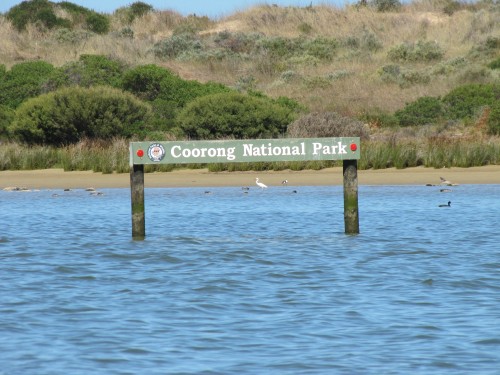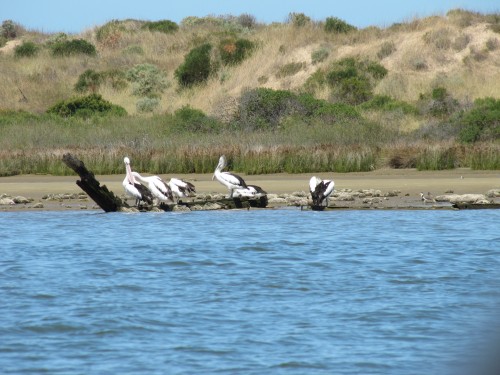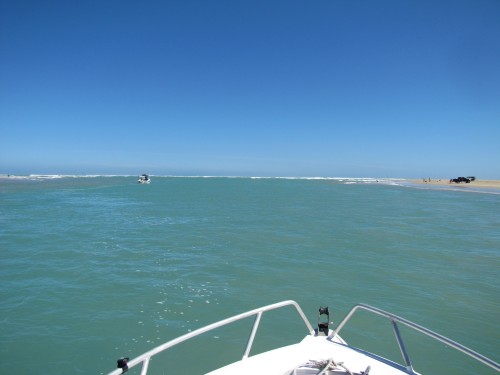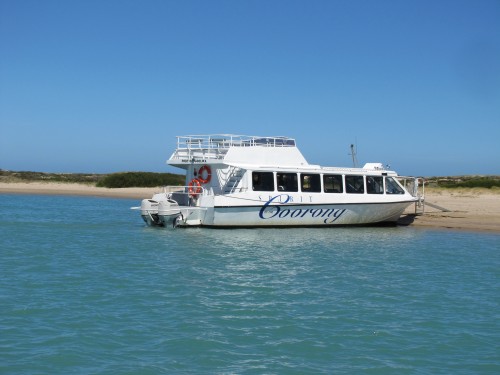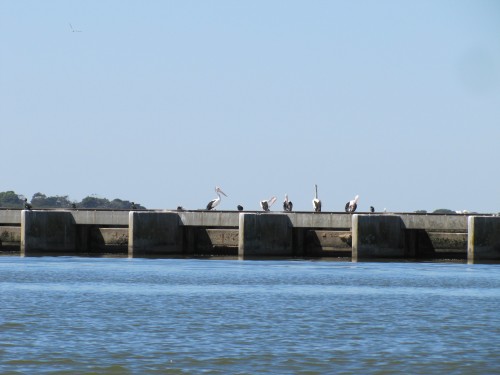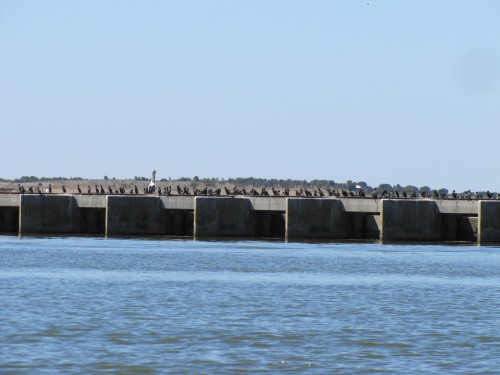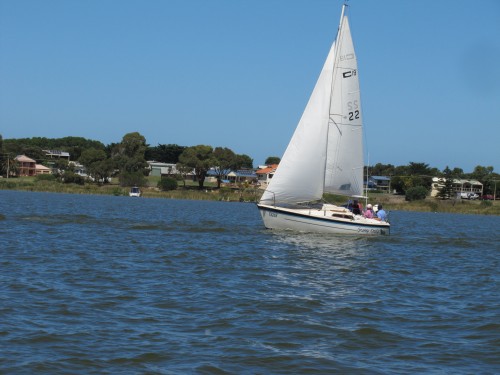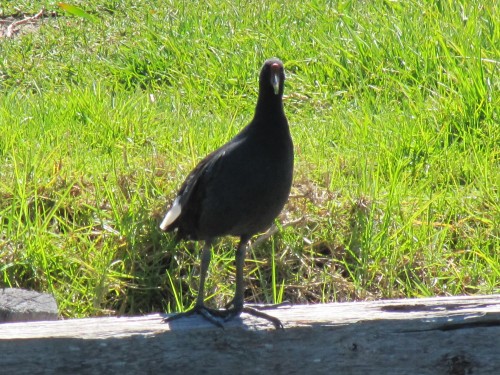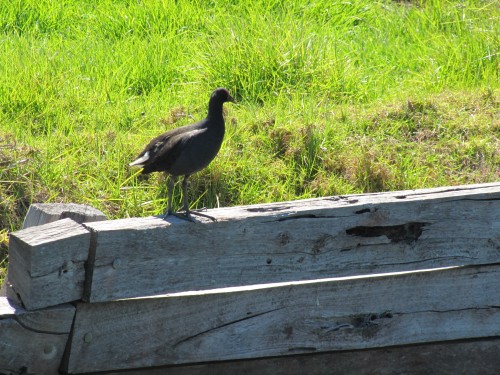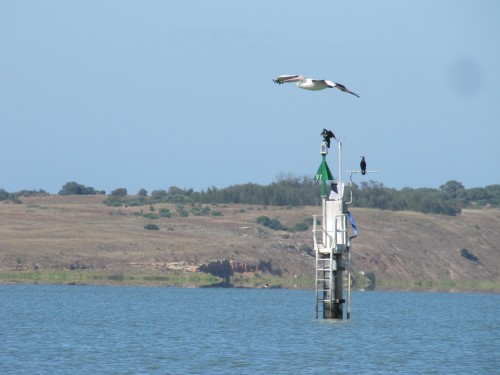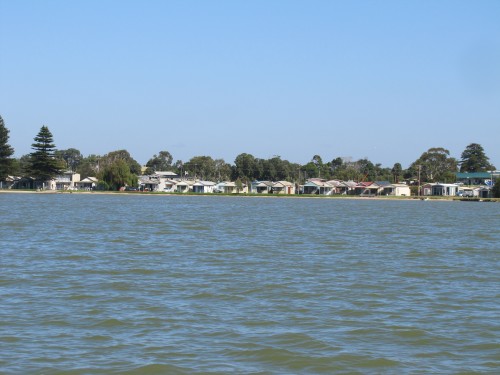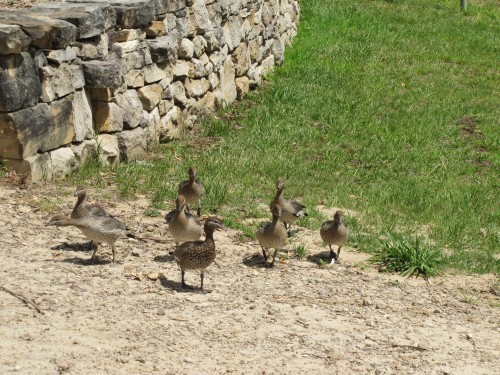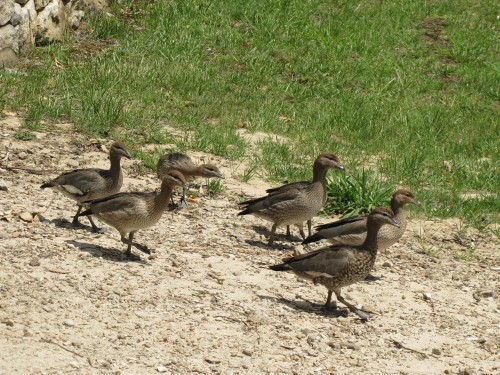Coorong National Park
On our recent boat trip we passed through the Goolwa barrages and headed south along the Coorong towards the mouth of the River Murray. It is here that Australia’s largest river empties into the Southern Ocean. As we travelled along we followed the line of sand hills which separate the Coorong from the ocean. It places these sand hills are spectacular – more of that for another post.
all along this stretch of the Coorong it is hard keeping up with all the birds one sees, especially seeing we were travelling most of the time at 25mph. On several occasions we had to slow down to slow walking pace and keep a sharp eye out for sand bars; more than once we almost became grounded.
In the photo above you can see a Little Egret, some Grey Teal and a Eurasian Coot just to the right of the sign.
Below the photo shows several Australian pelicans and a Masked Lapwing on the right. Almost impossible to see (except under extreme enlargement) are what look like Sharp-tailed Sandpipers and maybe a stilt.
A little further on we reached the mouth of the Murray. Our captain was unwilling to venture too close for fear of bottoming out on a sand bar. I was surprised by the number of vehicles on the beach and the number of people fishing along the shore of the river. I shouldn’t have been – it was a holiday long weekend and the weather was perfect.
The last photo below shows one of the tourist boats operating in this part of the river, The Spirit of the Coorong. It takes tourists from Goolwa down through the Coorong on a regular schedule.
Birds on the Barrages at Goolwa
On our boat trip on the River Murray a few weeks ago we went through the lock in the barrages at Goolwa. This allowed us to pass through from the River Murray into the Coorong and travel by boat towards the mouth of the river. Today’s photos show many birds lined up along the top of the barrages.
In the photo above you can see a number of Australian Pelicans, while below is a large gathering of cormorants. Although I’m not absolutely certain, I think that they are probably Little Black Cormorants. They don’t seem to be big enough for the larger Great Cormorant.
Purple Swamphen up close
On our recent boat trip on Lake Alexandrina and the River Murray we took a little detour into a new housing estate with water frontage. We had to slow right down from the 25mph we had been travelling at to a very modest 4 knots (7.4mph). We also had to navigate a narrow canal less than 10m wide so this gave me an ideal opportunity to do some close up birding.
Unfortunately there was very little to see, with the exception of the Purple Swamphen shown in today’s photos below. It seemed quite unconcerned by our presence as our captain manoeuvred our boat through a tricky passage before turning around and leaving the channel and back out to the river.
Boat trip on Lake Alexandrina
In my last post here I wrote about a recent boat trip on Lake Alexandrina just south of my home in Murray Bridge. While this boat trip was mainly recreational in purpose, I cannot help but notice birds along the way whether I am driving in a car, travelling on a bus or train, walking or boating.
While travelling at 40kph (25mph) across the water is not conducive to birding – the boat’s engine scares many birds away – some birds are obviously very used to speeding boats on this stretch of water. Silver Gulls followed the wake of the boat as shown in my last post, Australian Pelicans kept fishing less than 40 metres from our racing vessel, cormorants kept bobbing up out of the water here and there and flocks of ducks flew over the lake heading somewhere else to feed.
The photo above shows one of many navigation posts seen at intervals across the lake. The depth of the water varies from a few centimetres through to about 4 – 5 metres. Some sections are far too shallow for safe boating – as we found out later in the day. I deliberately captured both the pelican and two Little Black Cormorants in the photo. Little Black and Little Pied are the two dominant species of cormorant in the lakes and river system of the Lower Murray River.
The photo below shows a view of the lakeside town of Milang. I can thoroughly recommend the little bakery in town, and our friends tell us that the fish and chip shop is also worth patronising.
A family outing
It is quite a common sight to see small flocks of Australian Wood Ducks in many places around Australia where they occur. Sometimes they even gather in loose flocks of many dozens – even hundreds. They are often seen grazing on grasslands, ovals, lawned areas in parklands and along water courses, lakes and wetlands.
The group shown in today’s photos were seen near a watercourse in the Mt Annan Botanic Gardens in the Sydney suburb of Campbelltown. It appears to be a family group with the mother leading the way and all the offspring following. The gardens see many hundreds of visitors daily, so these birds – even the younger one – were not all concerned by our presence. I’ve experienced that lack of timidity in this species when visiting other parks and gardens. It certainly makes photography much easier when the birds hang around – almost as if they are posing deliberately for my camera!
